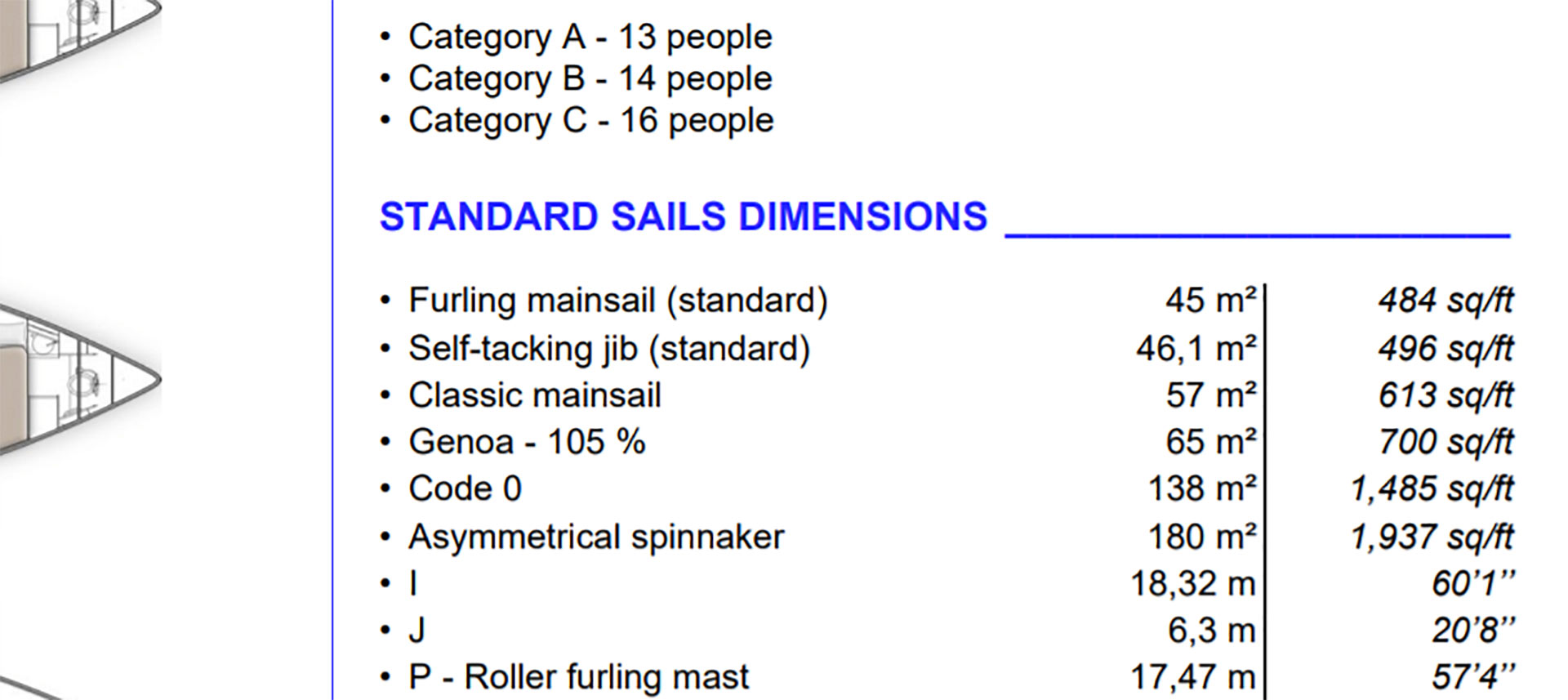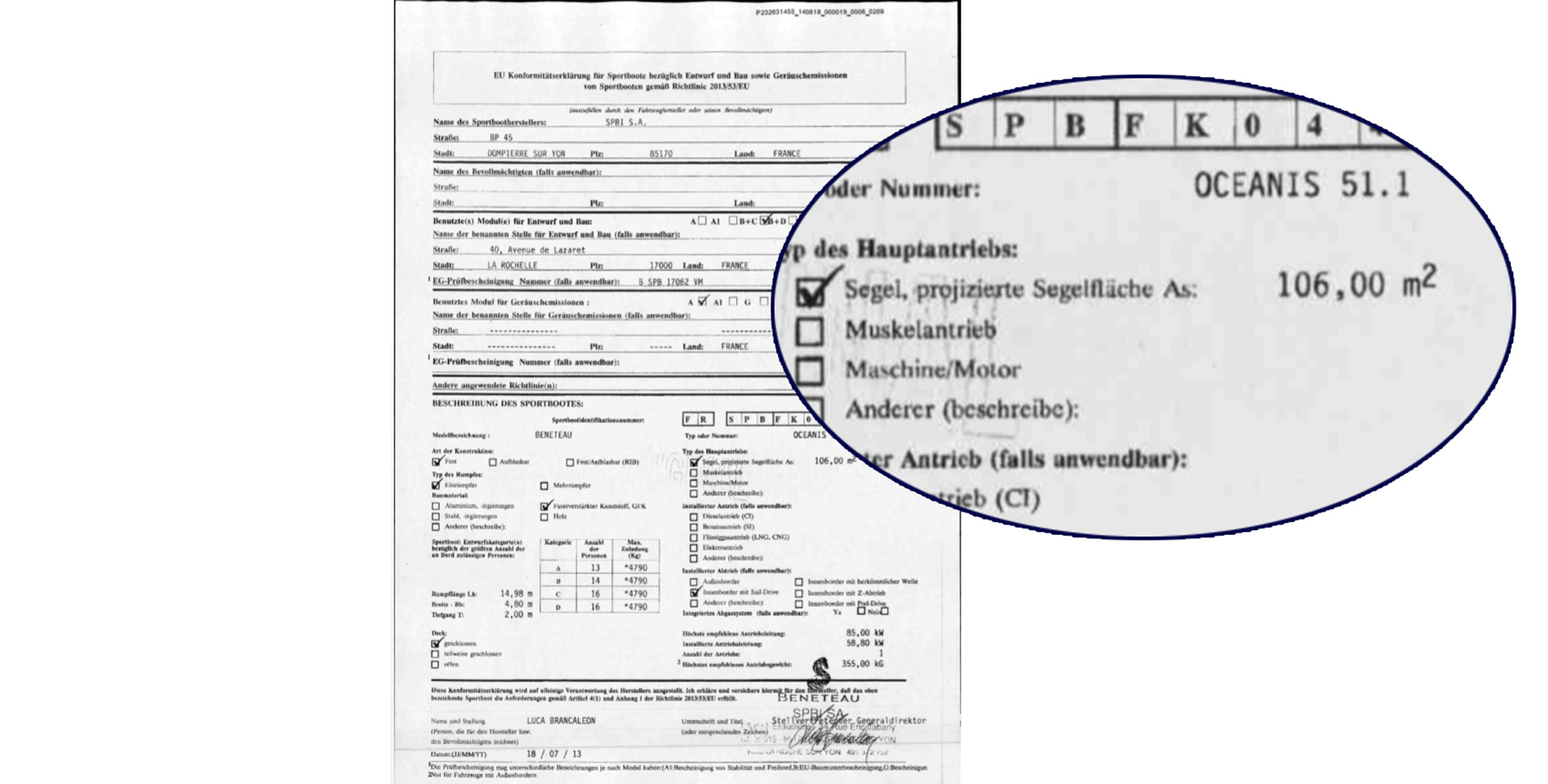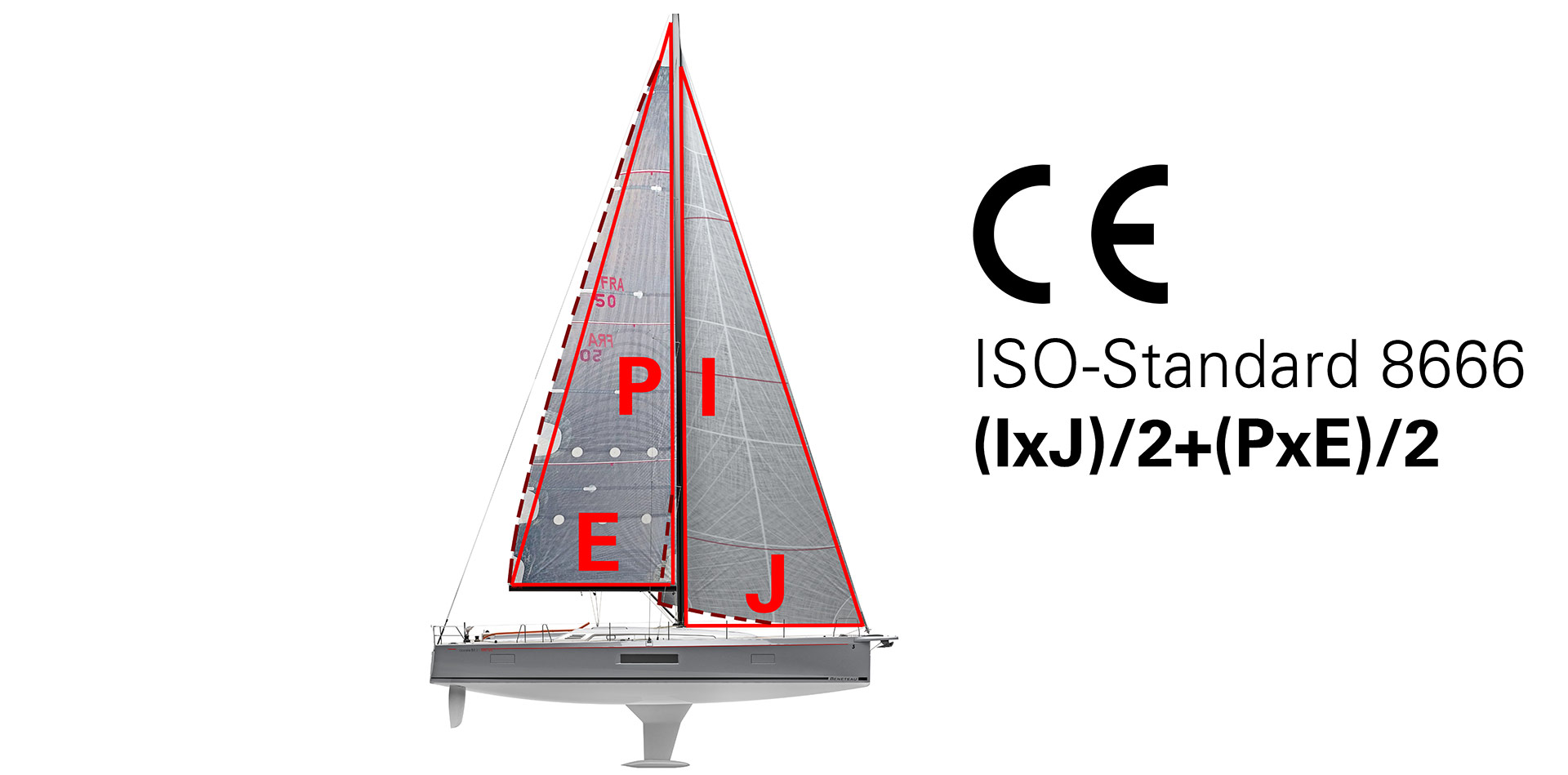It should be a man´s life´s aim to be able to learn a new thing every day. I barely get this right but some days ago I´ve had such a big eye-opener. We´ve got an email from a customer who recently bought a bout from my company and as he was now in the process of getting the boat licensed for an inshore lake with strict stipulations he told me that the sail area as stated in the CE-Certification of the boat “was wrong”. There was too less of it. I triple checked and he was right: His boat should have had a significantly higher amount of square metres sail area.

As I was learning later, this effect can also be reversed: Your boat may have more sail area in the CE-documents than in reality, let´s have a look at Beneteau´s Oceanis 51.1 at which this can be shown nicely. Looking in the technical specs of this large yacht, the boat should bear a total of 91.1 square metres of upwind sail area, which is the sum of jib/Genoa and mainsail. Surprisingly enough, that´s not the sum as depicted in the CE-documents.
Sail area according to CE-Certification is not the real deal
Checking the CE-Certification of the Oceanis 51.1 in her standard configuration with a furling jib and the in-mast furling mainsail, the CE states that this boat has a total of 106 square metres. That´s a difference of some 10.5 square metres and some may find this difference is considerable. A diversion of fifteen per cent? What´s going on here?

It must have been something to do with the term “projected sail area” as stated in the CE-certificate. Projected can mean anything and maybe, I thought, that´s the clue. So I called up the yard and asked some naval architects I´ve had in my vicinity and they, after rolling their eyes a bit to communicate that this CE-certification may bear some rules and solutions which are, well, prone to maybe thought through a bit more, one of them drew me a sketch and suddenly it all made sense (and made no sense at all at the same time).
Explaining the CE-Certification´s sail area equation
The reason why the CE-certified sail area is not corresponding with the real sail area is simply the formula which is used to calculate these numbers. This standard is the ISO-norm 8666 which is regulating all CE-relevant numbers. Regarding the sails area it´s quite simple. Looking at the mainsail the sail area is projected by having measurement P – which is the mainsail´s luff – times E, which is the length of the boom, devided by two. Same with jib – I times J devided by two. Both are added and you have the CE-“projected” sail area. So in essence, CE-sail are is the sum of two perfect triangles.

Now, if you have a full battened mainsail, or even worse, a square top mainsail, then all the sail area created by the flat top won´t be covered by that equation. Same with self-tacking jibs, but the other way round: Here the CE will show more sail area than your boat actually have. What does this mean in real life? Don´t take the CE-numbers all too seriously, go for the real numbers provided by your sail maker. Anyway, it´s interesting to know this fact and at least food for a chat at the jetty.
You may as well find interesting to read:
Sails area/displacement ratio explained
When will a sailboat capsize?
4 essential manoeuvres for skippers
